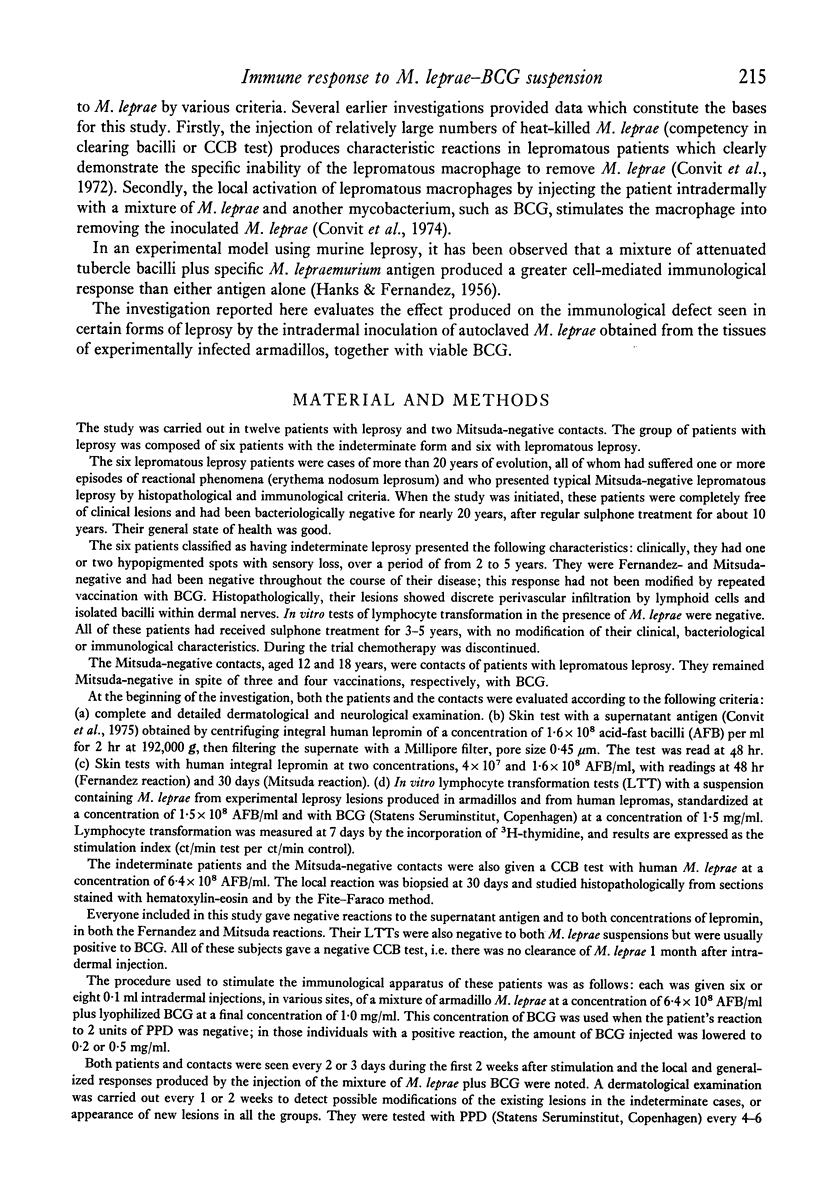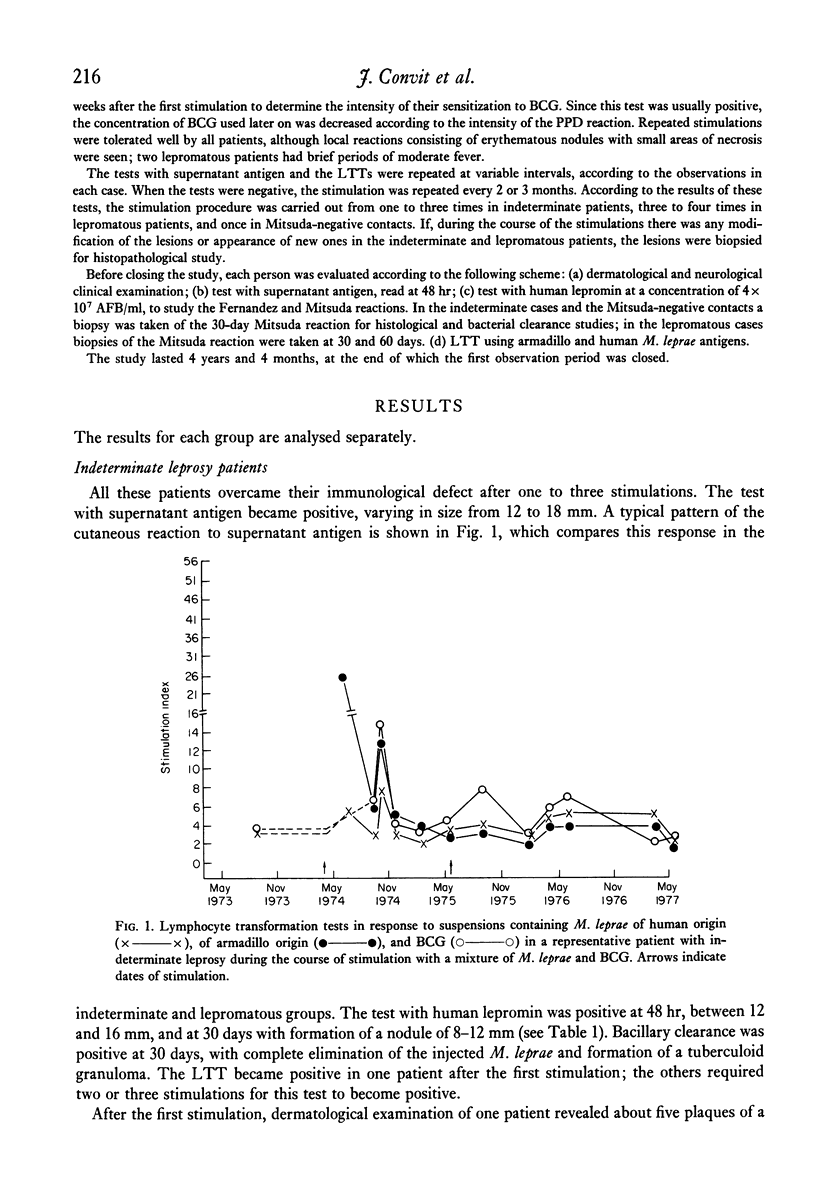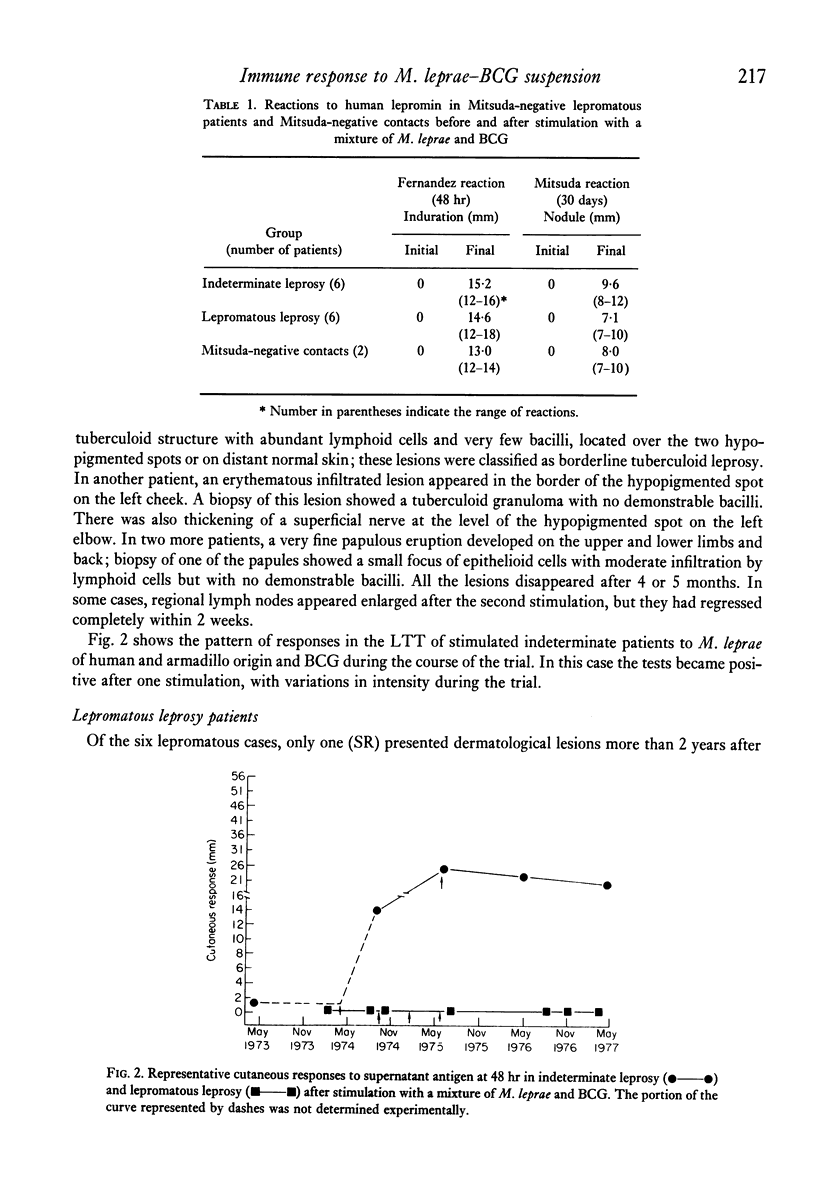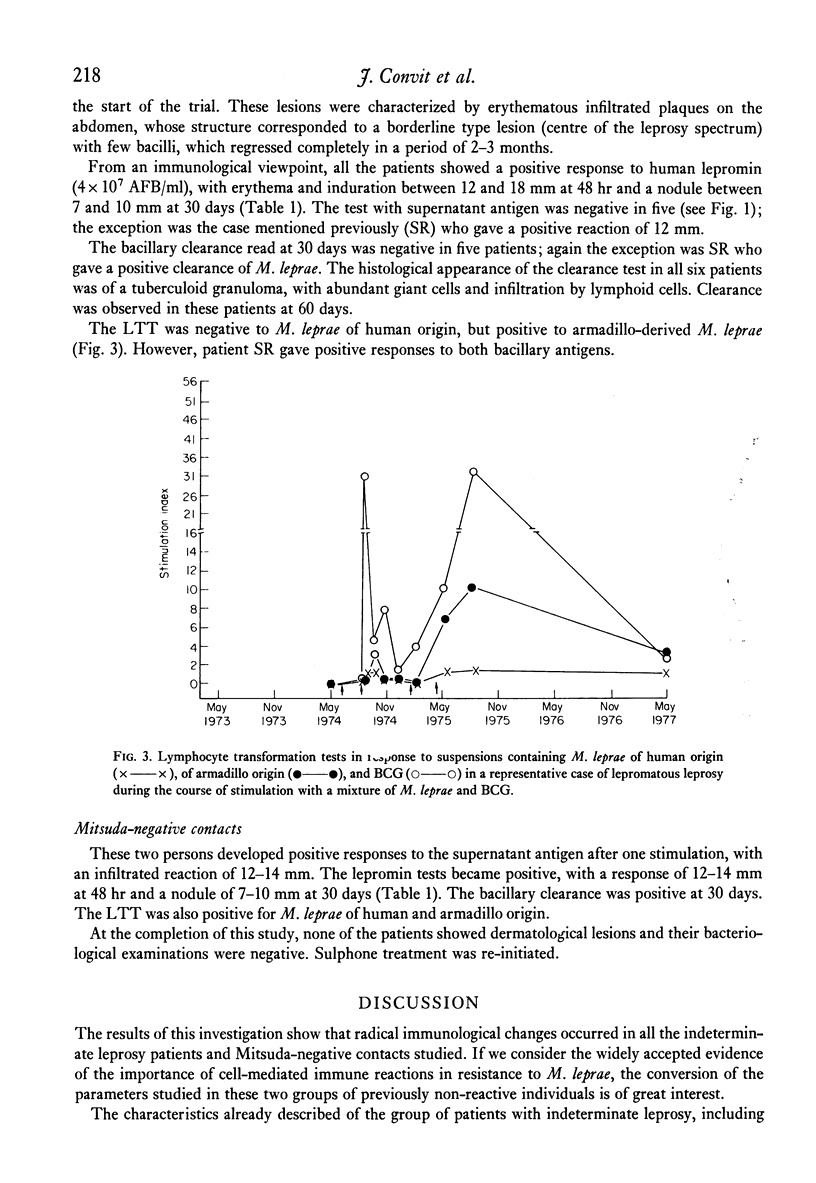Abstract
This investigation was carried out to study the possibility of eliciting favourable immunological changes in small groups of Mitsuda-negative patients with indeterminate leprosy, lepromatous patients who were bacteriologically negative after prolonged treatment with sulphones, and in Mitsuda-negative contacts by means of stimulation with a mixture of autoclaved tissues from Mycobacterium leprae-infected armadillos and living BCG. A radical change was observed in the specific immunological activity of the indeterminate group, all of whom initially had occasional bacilli in cutaneous nerves in biopsies taken from hypopigmented spots, and in the persistently Mitsuda-negative contacts. The 48 hr and 30 day reactions to lepromin, the 48 hr reaction to supernatant antigen from lepromin, the test for bacillary clearence and in vitro lymphocyte transformation (LTT) to M. leprae from human and armadillo lesions all became positive. Of the lepromatous patients studied, only one became positive to all the criteria mentioned above. In the others, the 48 hr reaction to supernatant antigen, the LTT to antigen from a humn source, and the clearance test remained negative, while the Fernandez and Mitsuda reactions became positive. These results are discussed in terms of the possible use of this stimulation procedure in the prevention and immunotherapy of leprosy.
Full text
PDF






Selected References
These references are in PubMed. This may not be the complete list of references from this article.
- Convit J., Avila J. L., Goihman M., Pinardi M. E. A test for the determination of competency in clearing bacilli in leprosy patients. Bull World Health Organ. 1972;46(6):821–826. [PMC free article] [PubMed] [Google Scholar]
- Convit J., Pinardi M. E., Avila J. L., Aranzazu N. Specificity of the 48-hour reaction to Mitsuda antigen. Use of a soluble antigen from human and armadillo lepromin. Bull World Health Organ. 1975;52(2):187–191. [PMC free article] [PubMed] [Google Scholar]
- Convit J., Pinardi M. E., Rodríguez Ochoa G., Ulrich M., Avila J. L., Goihman M. Elimination of Mycobacterium leprae subsequent to local in vivo activation of macrophages in lepromatous leprosy by other mycobacteria. Clin Exp Immunol. 1974 Jun;17(2):261–265. [PMC free article] [PubMed] [Google Scholar]
- Convit J., Pinardi M. E., Rojas F. A. Some considerations regarding the immunology of leprosy. Int J Lepr Other Mycobact Dis. 1971 Apr-Jun;39(2):556–564. [PubMed] [Google Scholar]
- FERNANDEZ J. M., HANKS J. H. Enhancement of resistance to murine leprosy by BCG plus specific antigen. Int J Lepr. 1956 Jan-Mar;24(1):65–73. [PubMed] [Google Scholar]
- Goihman-Yahr M., Raffel S., Ferraresi R. W. Cross reactivities in lepromin. Int Arch Allergy Appl Immunol. 1969;36(5):450–468. doi: 10.1159/000230765. [DOI] [PubMed] [Google Scholar]
- RIBI E., LARSON C. L., LIST R., WICHT W. Immunologic significance of the cell wall of mycobacteria. Proc Soc Exp Biol Med. 1958 Jun;98(2):263–265. doi: 10.3181/00379727-98-24011. [DOI] [PubMed] [Google Scholar]
- SONES M., ISRAEL H. L. Altered immunologic reactions in sarcoidosis. Ann Intern Med. 1954 Feb;40(2):260–268. doi: 10.7326/0003-4819-40-2-260. [DOI] [PubMed] [Google Scholar]
- Turk J. L., Waters M. F. Immunological basis for depression of cellular immunity and the delayed allergic response in patients with lepromatous leprosy. Lancet. 1968 Aug 24;2(7565):436–438. doi: 10.1016/s0140-6736(68)90472-8. [DOI] [PubMed] [Google Scholar]
- Ulrich M., de Salas B., Convit J. Lymphocyte transformation with phytomitogens in leprosy. Int J Lepr Other Mycobact Dis. 1972 Jan-Mar;40(1):4–9. [PubMed] [Google Scholar]


